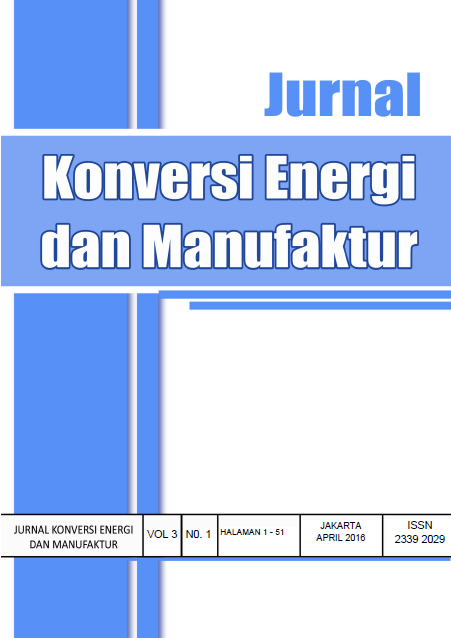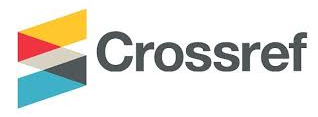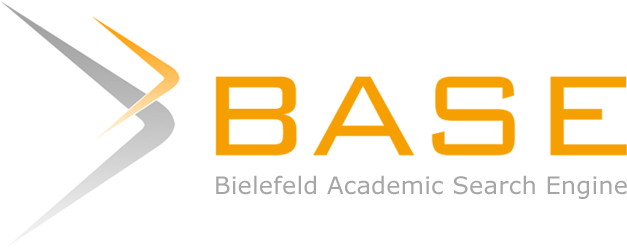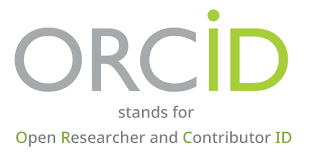STUDI AWAL PEMBUATAN SERBUK TEMBAGA BERSTRUKTUR AMORF
Abstract
Serbuk logam umumnya diproduksi dengan proses atomisasi (sentrifugal, gas, atau air), elektrolisis, atau kimia. Logam umumnya memiliki struktur kristal (crystalline), agar dapat diperoleh serbuk logam berstruktur nonkristal atau amorf (amorphous) maka proses yang dipilih adalah reaksi kimia. Untuk memperoleh serbuk tembaga berstruktur amorf maka dilakukan reaksi antara larutan tembaga (II) sulfat (atau CuSO4) dengan logam seng (atau Zn) pada temperatur dan kecepatan agitasi yang relatif tinggi. Sedangkan untuk meningkatkan kemurnian logam tembaga (atau Cu) yang dihasilkan digunakan gas inert selama berlangsungnya reaksi kimia tersebut. Karakterisasi terhadap serbuk logam yang dihasilkan dilakukan dengan analisis menggunakan sinar x. Aplikasi logam amorf antara lain adalah sebagai material soft-magnetic dan aplikasi yang membutuhkan material amorf yang ketangguhannya lebih tinggi dibandingkan material amorf yang lain seperti keramik. Ini merupakan penelitian awal pembuatan serbuk tembaga berstruktur amorf, sebab untuk bisa memperoleh logam yang nonkristal (metallic glass/glassy metal) adalah hal yang sulit, bahkan untuk memperoleh serbuk logam yang kemurniannya cukup tinggi pun dengan proses ini bukanlah hal yang mudah.
References
Suryanarayana & Grant Norton; X-Ray Diffraction (A Practical Approach); 1998; Plenum Press, New York.
Serope Kalpakjian & Steven Schmid; Manufacturing Processes for Engineering Materials, Fourth Edition; Pearson Education, Inc., USA.
Pat L. Mangonon; The Principles of Materials Selection for Engineering Design; 1999; Prentice, Inc.; New Jersey, USA.
Sidney H. Avner; Introduction to Physical Metallurgy, Second Edition; 1988; Fong & Sons Printers Pte. Ltd., Singapore.
Prof. Sukardjo; Kimia Organik; 1990; Rineka Cipta, Jakarta.
William F. Smith; Principles of Materials Science and Engineering, Third Edition; 1996; McGraw-Hill, Inc., USA.
Robert Reed-Hill & Reza Abbaschian; Physical Metallurgy Principles, Third Edition; 1994; PWS Publishing Company, Boston.
James A. Jacobs & Thomas F. Kilduff, Engineering Materials Technology, Prentice-Hall, Inc., New Jersey.
Wang Guang; Study of Mechanical Properties of Amorphous Copper with Molecular Dynamics Simulation; IOP Electronic Journals, Chinese Physics B, 256-263; 2008.
Nicholas De Cristofaro; Amorphous Metals in Electric-Power Distribution Applications; Materials Research Society (MRS) Bulletin, Volume 23, Number 5 (1998), P.50-56.
J. C. Anderson; Materials Science, Fourth Edition; Chapman & Hall; London; 1990.
P. J. Goodhew & F. J. Humphreys; Electron Microscopy and Analysis, Second Edition; 1988; Taylor & Francis Inc., London.
W. Bolton; Engineering Materials Technology, Second Edition; 1993; Newnes, Oxford.
Zbigniew D. Jastrzebski; The Nature and Properties of Engineering Materials, Third Edition; 1987; John Wiley & Sons, Singapore.
William D. Callister; Materials Science and Engineering (An Introduction), Fourth Edition; 1997; John Wiley & Sons, Inc.
Albert G. Guy & John J. Hren; Elements of Physical Metallurgy, Third Edition; 1974; Addison-Wesley Publishing Company, Inc.
Lawrence H. Van Vlack; Materials Science for Engineers; Addition-Wesley Publishing Company; Massachusetts; 1973.
ASM Handbook, Vol. 2; Properties and Selection: Nonferrous Alloys and Special Purpose Materials; ASM International; USA; 1995.
American Society for Metals; Metals Handbook, Desk Edition; Metals Park; Ohio; 1995.
ASM Handbook Vol. 10; Materials Characterization; ASM International; USA; 1992.





















